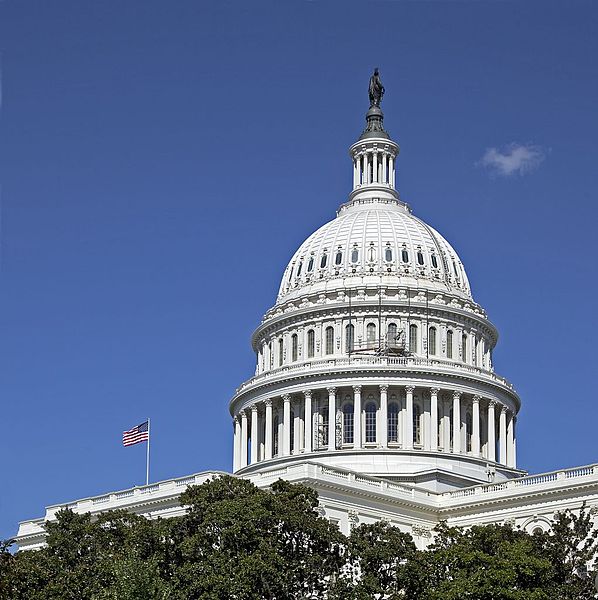The Farm Bill debate is making headlines as policymakers work to hammer out new legislation, but most of what you’ll see in the headlines is related to what is known as the Supplemental Nutrition Assistance Program (SNAP) or crop insurance. While these two programs are important, there are many other programs and sectors of importance.
As such, Jane DeMarchi, American Seed Trade Association vice president of government and regulatory affairs, has been watching and working with various partners and coalitions to ensure language in the commodity, conservation, crop insurance, horticulture, research, trade and miscellaneous titles is in the best interest of seed companies.
“We’ve been working in partnership with a number of coalitions on key priorities,” DeMarchi says. “We are really trying to strengthen our network and relationships here in D.C.” Outside of the traditional commodity groups, ASTA is working with the National Wildlife Federation, AmericanHort and the Society of American Florists.
After what House Agriculture Committee Chairman Michael Conaway says is the result of a three-year process, including 114 hearings, six in-the-field listening sessions and countless meetings with folks representing Americans served by every facet of the farm bill, the House Agriculture Committee released “2018 Farm Bill, the Agriculture and Nutrition Act (H.R.2)” April 12.
Today (May 18), H.R.2 failed to pass out of the house by a vote of 198-213. The Senate is expected to release their version in early June.
In general, H.R.2 worked to address the five-year, 52-percent decline in the farm economy by providing a strong safety net for growers. DeMarchi spotlights areas of importance for the seed industry.
Title I: Commodities. Within this title of the farm bill, ASTA encourages the use of specific language to help ensure that both Agriculture Risk Coverage and Price Loss Coverage, more commonly known as ARC and PLC, are available to hybrid seed producers.
“Yields for hybrid seed producers are generally lower than that of typical growers,” DeMarchi says. “Previous farm bills have included language, so these growers aren’t at a disadvantage.
The House farm bill keeps the same language from the 2014 farm bill, which is good, DeMarchi says.
Title II: Conservation. From what is known, DeMarchi says the Conservation Title in the House and Senate bills will look very different. The House version, she says, increases the number of acres in the Conservation Reserve Program, but decreases the dollars per acre paid for seeds from 50 percent to 25 percent.
“We are not in favor of this decrease,” DeMarchi says. “There are other things the government can do within the program to decrease seed costs.
“This includes increasing transparency when seeding requirements are created, and focusing on the types of species that can be planted and the number of species in a mix, as well as the seeding rate. All of these factors impact the overall cost of the program.”
She also notes that a big change in H.R.2 is that it eliminates the Conservation Stewardship Program (CSP), rolling it under the Environmental Quality Incentives Program (EQIP). ASTA has no position on this.
III: Trade. DeMarchi says ASTA has been hard at work to secure funding for the Market Access Program and Foreign Market Development program. The House version of the farm bill rolls four programs (MAP, FMD, EMP and TASC) into one international market development program.
ASTA participates and uses all of these programs, except EMP. Furthermore, FMD, TASC and EMP do not currently have baseline funding, which makes combining the programs critical. This will make planning long-term market development programs more difficult, DeMarchi says.
On the positive side, the H.R. 2 allows for increased funding through USAID to the Global Crop Diversity Trust, which ASTA supports.
Title V: Crop Insurance. Regarding crop insurance, DeMarchi says ASTA wants to ensure that crop insurance doesn’t hinder the use of cover crops. Language specific to cover crops was not included in the House farm bill, but we are hopeful it will be included in the Senate’s version, she says.
Currently, the cover crop guidelines from the Natural Resources Conservation Service (NRCS) controls termination timelines, which can create a conflict with planting and therefore crop insurance. The goal is to make sure that farmers’ ability to use cover crops to improve soil health is not limited by USDA program requirements.
Title VII: Research, Extension, and Related Matters. This title includes funding for the Foundation for Food and Agriculture Research (FFAR). The 2014 Farm Bill saw a mandatory $200 million put toward this program, which ASTA supports. The House version does not include funding for FFAR, but DeMarchi is hopeful the Senate version will.
However, the House version does authorize $30 million to a new “Ag Genome to Phenome” project.
Title IX: Horticulture. In this title, DeMarchi says there are a few things ASTA has been watching and working on. The House farm bill includes language supporting the development of a regulatory framework for biostimulants and creates a definition. “We see this as a technology that holds a lot of promise,” DeMarchi says.
“As it is written, Title IX would require that the Secretary of Agriculture, in consultation with the Environmental Protection Agency administrator, write a report on how to best improve policies around gene editing and plant breeding innovation,” DeMarchi says. “This is also a good thing.”
The Horticulture title also expands coverage of the Plant Variety Protection Act to include asexually propagated material, also a good thing. This includes language that will better align the United States with the international system and expand protections for flowers and other asexually propagated material.
The House version includes language instructing USDA to increase and carryout a national science-based campaign about technology as it relates to food.
For now, the House Agriculture Committee will go back to the drawing board. ASTA will continue its work to ensure the interests of the seed industry are represented. The deadline to pass a farm bill is Sept. 30.













